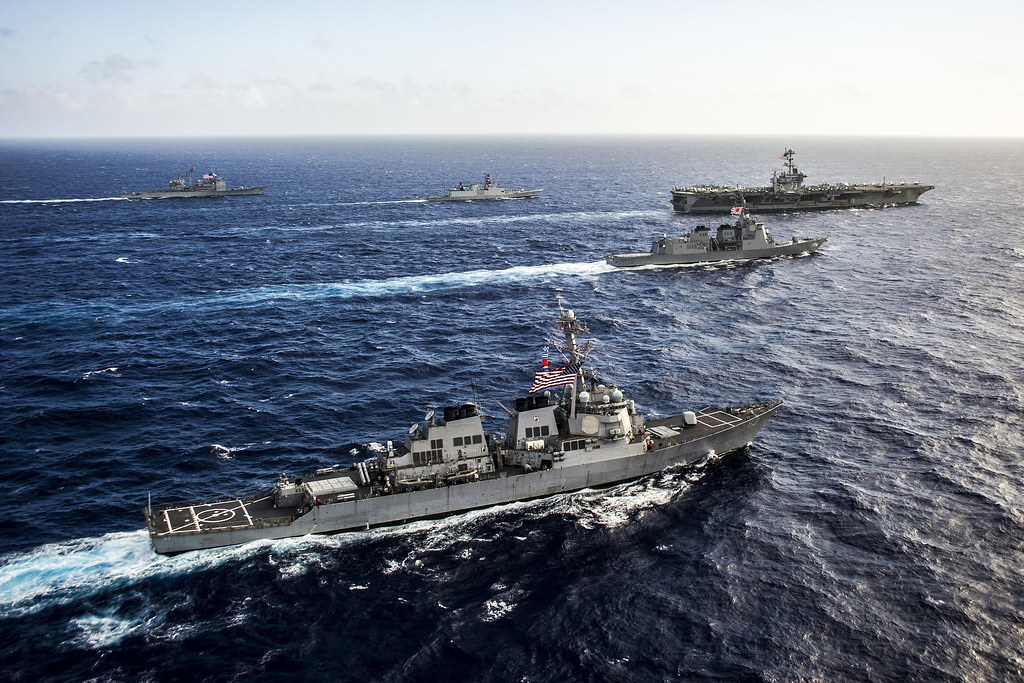From Task Force 70 Public Affairs
In this file photo, ships from U.S. Navy, Indian Navy, and Japan Maritime Self-Defense Force transit in formation during Malabar 2014. (U.S. Navy/MC3 Chris Cavagnaro) >>
SASEBO, Japan - Naval ships, aircraft and personnel from India, Japan and the United States will participate in the annual exercise Malabar 2016, June 9-17, 2016.
Malabar 2016 is the latest in a continuing series of complex, high-end warfighting exercises conducted to advance multi-national maritime relationships and mutual security issues.
Participants from the U.S. Navy include the Nimitz-class aircraft carrier USS John C. Stennis (CVN 74) with embarked Carrier Air Wing 9, the guided-missile cruiser USS Mobile Bay (CG 53) and guided-missile destroyers USS Stockdale (DDG 106), USS William P. Lawrence (DDG 110) and USS Chung-Hoon (DDG 93); a P-8A Poseidon aircraft; and a Los Angeles-class fast- attack submarine.
The exercise will feature both ashore and at-sea training.
While ashore in Sasebo, training will include subject matter expert and professional exchanges on Carrier Strike Group operations, maritime patrol and reconnaissance operations, surface and anti-submarine warfare, medical operations, damage control, explosive ordnance disposal (EOD), helicopter operations, and visit, board, search and seizure (VBSS) operations.
The at-sea portions of the exercise will be conducted in the Philippine Sea and are designed to advance participating nations’ military-to-military coordination and capacity to plan and execute tactical operations in a multinational environment.
Events planned during the at-sea portions include liaison officer professional exchanges and embarks; a photo exercise; submarine familiarization; high-value unit defense; air defense exercises; medical evacuation drills; surface warfare exercises; communications exercises; search and rescue exercises; helicopter cross-deck evolutions; underway replenishments; gunnery exercises; VBSS exercises; and anti-submarine warfare.
Indian, Japanese and U.S. maritime forces have a common understanding and knowledge of a shared working environment at sea.
Each iteration of this exercise helps to advance the level of understanding between the navies’ Sailors, and is a continuing process over time. Members of the Indo-Asia-Pacific nations utilize their maritime forces as natural partners, and continue to strengthen relationships.
For a list of participating Indian forces, please refer to the Indian Navy Headquarters. For a list of participating Japanese forces, please refer to the Japan Maritime Staff Office.

